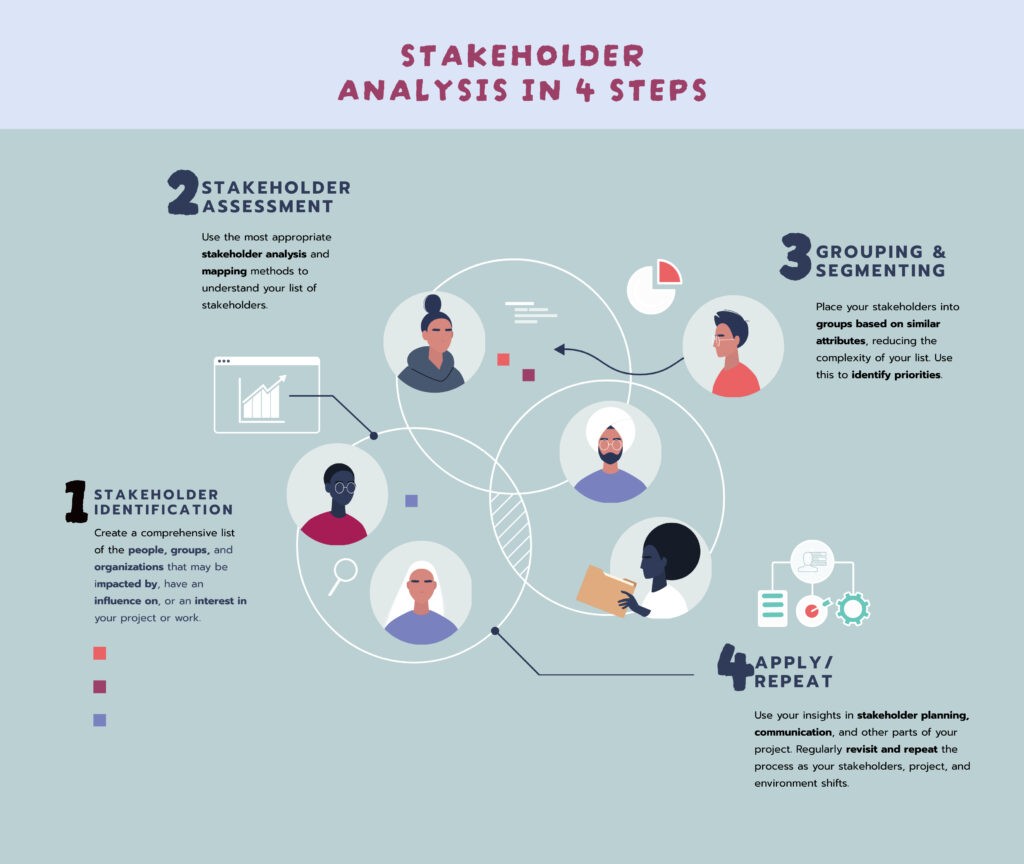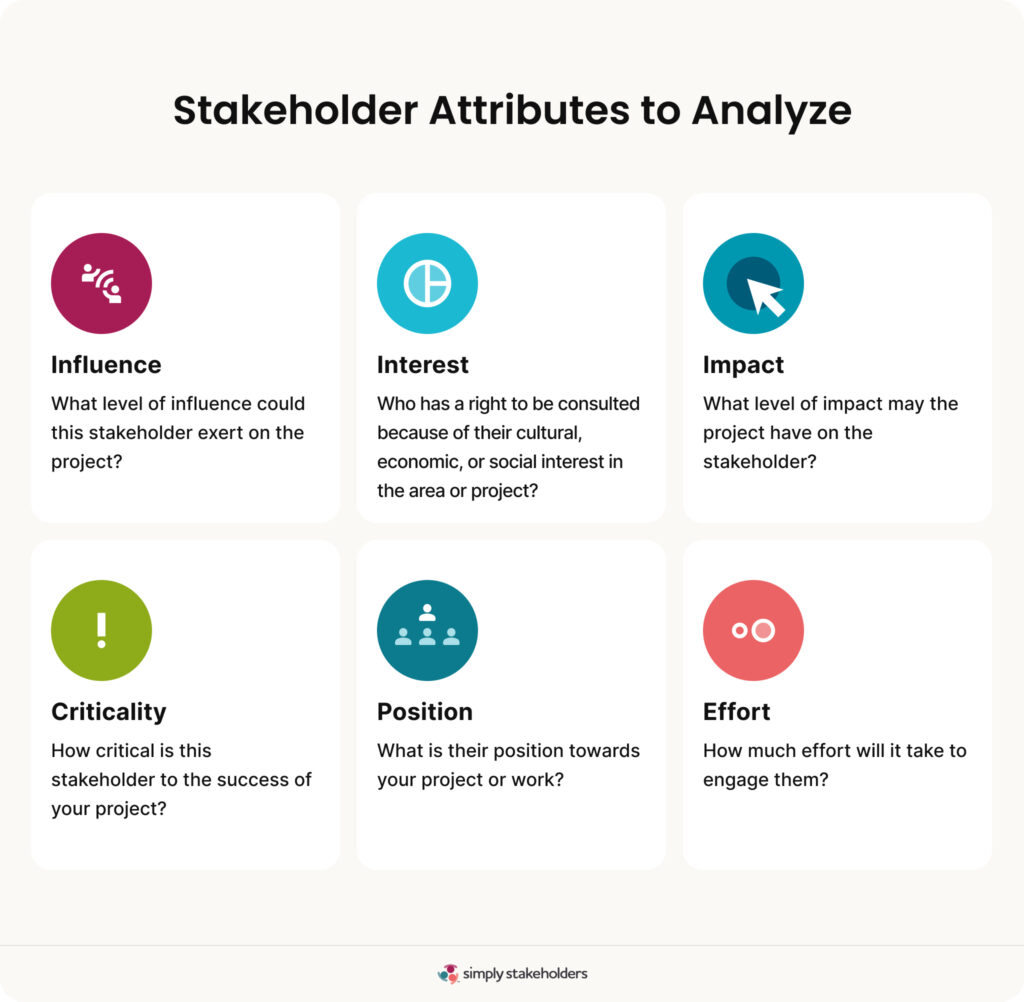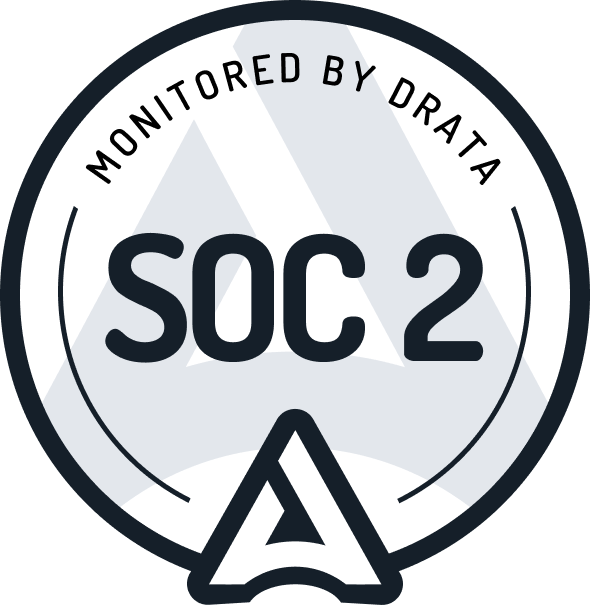Advanced stakeholder management
How to Identify Influential Stakeholders: A Guide
Discover effective strategies to identify influential stakeholders and ensure your project succeeds. We share simple steps to analyze your stakeholders, along with some more advanced tips.

Need to identify influential stakeholders in order to plan a consultation, build the right relationships, or to manage different parties as part of your project management process?
Don’t underestimate the importance of stakeholders — and knowing which of your stakeholders hold the greatest influence over your decisions, other stakeholder groups, and your project outcomes. If you can identify your most important stakeholders, you can prioritize building relationships with them so that you can (hopefully) gain their support from the start.
In this guide, we look at how you can identify which stakeholders are most likely to hold greater influence — and how you should engage with them.
Understanding Stakeholder Analysis Objectives
To understand how you can identify influential stakeholders, you first need to understand stakeholder analysis — and what this process can help you achieve. That’s because identifying influence is part of stakeholder analysis, which involves deepening your understanding of stakeholders and their attributes.
But aside from identifying stakeholder influence, you might conduct a stakeholder analysis in order to:
- Assess each stakeholder’s potential impact on the project’s success
- Determine how the project or your organization might impact each stakeholder
- Understand each stakeholder’s level of interest in the project (and what those specific interests may be)
- Figure out which relationships you should manage more closely by tracking sentiment and relationship health
- Determine who you must engage with and gain support from
- Identify risks and potential challenges early on (so that you can address them)
- Give people confidence that you’re engaging with broader stakeholders and generally doing the right thing
- Start to build a social license
- Identify key stakeholders based on a combination of attributes (such as impact, influence, interest, criticality, and relationships) so that you can start to prioritize them
The Stakeholder Analysis Process
So, how do you analyze stakeholders and identify their influence? Here are the steps you’d typically follow when conducting a stakeholder analysis:
1. Identify Your Stakeholders
If you haven’t already, you’ll first need to identify your stakeholders — any people, groups, or organizations that may be impacted by, have an influence on, or an interest in your project or work. Think beyond your typical stakeholder list and make sure you include both internal and external stakeholders, such as investors, employees, and government entities. At this stage, keep your list broad — you’ll narrow it down shortly!
2. Assess Stakeholders
Conduct a stakeholder assessment by assigning characteristics, attributes, or ratings to your stakeholders to help you understand and compare them. For instance, you might give them a rating between 1-5 depending on their level of influence, with 1 being very low influence and 5 being very high influence.
Examples of stakeholders you’d typically mark as high influence include:
- Regulators
- Government (including elected representatives at all levels of government)
- Investors
- NGO/ Peak bodies
- Funding agencies
- Community leaders
- Union representatives
- Lobbyists
- Media
That said, not all of the above stakeholders are always going to be high influence — it will depend on the industry, issues, and individual stakeholders specific to your project.
As part of your assessment, you could also conduct stakeholder mapping to visualize your stakeholder attributes. Some stakeholder mapping models that are used to show stakeholder influence include:
- Stakeholder Relationship Mapping – Used to understand how each stakeholder is connected and who else they may be influencing or influenced by
- A Stakeholder Matrix – With influence mapped on one axis, you can use a matrix like the Power-Interest Grid to plot stakeholders into quadrants based on their level of power (very similar to influence) and interest
- Multi-Dimensional Stakeholder Mapping – This method is built into Simply Stakeholders and allows you to assign a score and produce visualizations across 6 key attributes, including influence, impact, interest, criticality, effort, and position.
3. Group and Segment
Once you’ve completed your assessment, you should be able to place your stakeholders into groups based on similar attributes or scores. This process will help you reduce the size and complexity of your list, and allow you to identify priorities and key stakeholders to target first.
Note that if a particular attribute is more important to you than the others (such as influence), then you may like to place more weight on it, while still keeping the other attributes in mind (more on this in the next section!)
4. Apply and Repeat
Finally, you should use your insights in stakeholder planning, communication, and other parts of your project. Regularly revisit and repeat the stakeholder analysis process as your stakeholders, project, and environment shifts to keep your segments and priorities up-to-date and relevant.
The Importance of Going Beyond Stakeholder Influence
Although this guide is focused on identifying influential stakeholders, we’d be remiss if we didn’t take a closer look at some of the other attributes you can use to analyze and categorize your stakeholders.
In fact, we’d caution against placing too much focus on influence — this could risk leaving out some very important stakeholders from your consultation that could deliver a lot of value to your project. Not only that, but it could risk leaving out some stakeholders that have a right to be consulted — and that you are obligated to engage with.
Other key attributes to bring into your stakeholder analysis include:
- Impact – This means that the project is likely to impact the individual, their community, their workplace, or their life in some way — good or bad. These people have a right to be informed about the project and have a say in it.
- Interest – This doesn’t refer to the people who might find your project interesting, but rather, the people or groups that may have a specific interest (cultural, economic, social, etc.) in the project. For instance, their lives may be disrupted, a culturally significant site could be destroyed, or they may stand to see social or economic gains or losses. These people have a right to be consulted.
- Criticality – This refers to how critical the stakeholder is to the success of the project. Higher criticality may indicate a greater need for stakeholder involvement.
- Position – This refers to the stakeholder’s position towards your project or work, whether negative, neutral, or positive. You may need to improve or maintain a stakeholder’s position by engaging with them.
- Effort – This indicates how much effort you may need to put towards engaging the stakeholder. High effort stakeholders may still be worth engaging if they’re also critical or influential, for instance.
Many organizations make the mistake of only analyzing stakeholders based on influence and impact, but it’s worth going beyond the basics to include the above attributes so that you can more accurately understand your stakeholders, set your priorities, and engage in a more relevant way.
Analyzing Stakeholder Interests and Perspectives
We’ve talked about assigning a score or level to stakeholder attributes such as influence, impact, and interest — and this can be invaluable for initial segmentation, planning, and strategy. But what about going deeper into your analysis? Consider exploring other aspects of your stakeholders, such as:
- Interests – Some of your stakeholders might have a financial interest in the project, while others may have a social or cultural interest.
- Motivations – Some stakeholders will be motivated to get involved because they want to contribute to their community, while others could be motivated by opportunities to get work, open a business, or improve safety.
- Perspectives – Some stakeholders will approach your project from a totally unique perspective due to their lived experience, disabilities, work background, hobbies, family life, cultural background, and other personal/professional characteristics.
Each time you identify a stakeholder’s specific interests, motivations, and perspectives, you should tailor your approach to their needs, ensuring you engage with stakeholders on the issues that matter to them.
As you begin to engage with stakeholders, you’ll have opportunities to get to know your stakeholders better. You’ll unlock further insights by:
- Meeting with and talking to your stakeholders
- Sending out surveys
- Recording their comments on social media and engagement platforms
- Recording their responses to emails
- Asking for feedback
- Observing their actions
- Seeing how they respond to different messages and engagement activities
It’s a good idea to note these details in your stakeholder software. Record every interaction and link them to the relevant stakeholder record so that you can deepen your initial analysis and build a more complete history of your stakeholder engagement. Better still, use stakeholder software (like Simply Stakeholders) that helps you efficiently analyze these interactions and turn them into insights by automatically tagging text-based interaction records with relevant issues tags and sentiment analysis scores.
Case Study: What Stakeholder Identification Looks Like in Practice
A government organization (like many of our customers) needed to consult on a proposed environmental policy change that would introduce stricter emissions standards for manufacturing facilities to reduce air pollution and work towards climate goals.
This policy would have the potential to impact various industries, businesses, and community groups in different ways. The first step for the project team was to identify who their stakeholders are and then analyze them in order to narrow their focus to key stakeholders for the initial consultation.
Here are some basic findings from their early identification and analysis:
| Low/Medium/High | |||||
| Stakeholder | Influence | Impact | Interest | Position | Effort |
| Manufacturing company owners, managers & investors | M | H | H | L | M |
| Manufacturing employees | L | M | H | M | H |
| Manufacturing suppliers | M | H | H | M | M |
| Environmental organizations | M | M | H | H | M |
| Environmental monitoring & protection agencies | H | H | H | H | M |
| Public health organizations | L | L | M | H | M |
| Labour unions | H | L | M | M | M |
| Businesses near manufacturing facilities | L | M | M | H | M |
| Residents & local communities near manufacturing facilities | L | M | H | H | H |
Although environmental monitoring & protection agencies and labour unions were identified as the highest influence stakeholders, it’s worth considering that the remaining stakeholder groups also rated highly on at least one of the other analyzed attributes due to being impacted by the policy, interested in the policy, or likely to support it.
With this in mind, the project team determined to engage broadly with all of the above groups early on in the consultation process. However, they first scheduled one-on-one meetings with key stakeholders from each of the high-influence groups to request their initial thoughts and perspectives on the policy before inviting other groups to comment. By doing this, they were able to negotiate some major adjustments to the policy before any major planning and consulting took place, and ensured the new regulations were more likely to be accepted.
The Role of Technology in Enhancing Stakeholder Identification
We’ve covered a lot in this guide, including stakeholder analysis, analyzing stakeholder attributes, how to identify influential stakeholders, and how to deepen your analysis for better stakeholder engagement outcomes.
It’s clear that identifying and analyzing stakeholders is an important part of stakeholder engagement — but it also has the potential to be time consuming. Especially if you don’t have the right tools to support the process.
Fortunately, there are a number of stakeholder tools available that can help simplify stakeholder tracking and analysis, helping you identify your influential stakeholders, manage your relationships, and much more.
Simply Stakeholders is designed to support your entire stakeholder engagement process, with built-in tools including:
- Stakeholder contact register
- Analysis (including AI sentiment analysis and smart issues tagging)
- Stakeholder mapping
- Relationship tracking
- Forms & surveys
- Communication
- Reporting
Head to our blog to learn more about basic and advanced stakeholder topics just like this one, or reach out to book a demo of our software!





